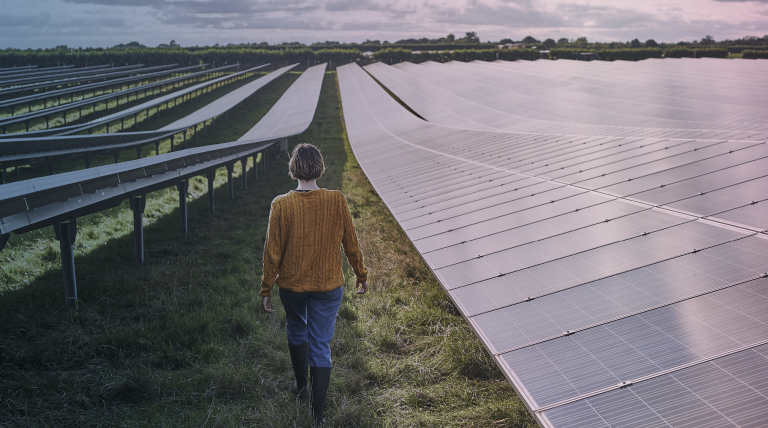For 40 years, we've been driving our country's economic and social progress. Four decades shaping Spain.
The new Cariñena substation is key to decarbonising rail transport in the Spanish Mediterranean Corridor
- Red Eléctrica de España has started the construction of this facility that will also allow the integration of renewable energy into the electricity system
The electrification of the transport sector is one of the keys to meeting the CO2 emissions reduction targets, as it proposes the use of electrical energy instead of fossil fuels in the railway network. To this end, the construction of a new 400 kilovolt (kV) substation in Cariñena (Zaragoza) is of vital importance to advance with the electrification of the railway axis that runs between Zaragoza, Teruel and Sagunto (in Valencia).
Red Eléctrica de España has begun the construction works of this facility and of the 400 kV double-circuit electricity line that will connect it to the grid, which will involve an investment of 8.3 million euros and will foreseeably last until the middle of 2021. Red Eléctrica’s Regional Delegate in Aragón, José Ignacio Lallana, has visited the site of the new substation together with the Mayor of Cariñena, Sergio Ortiz, in order to see first-hand the development of the works, which are currently in their initial phase.
The configuration of its switchgear will guarantee the substation maximum operating safety and greater flexibility for its associated maintenance operations. In addition, it is being built using a new standard for communications between the electrical equipment and the command and control systems, according to a protocol that improves the flexibility and security of the facility and reduces the amount of copper cabling by replacing it with fibre-optic technology. The action is part of the continuous drive for innovation and application of the best technologies in the construction of Red Eléctrica's facilities.
This substation is part of the set of Red Eléctrica facilities that will enable the electrification of the aforementioned ‘railway corridor’ and which is completed with the enlargements of other facilities such as the Calamocha and Mezquita substations in Teruel, and the Segorbe substation in Valencia.
In addition to decarbonising rail transport by providing electricity for this axis, the Cariñena substation will be a point of integration for a large volume of renewable energy in the area, 148 megawatts wind and 324 photovoltaic, from facilities that have already been confirmed access to the grid.
Electricity substations are energy input and output points that establish the appropriate voltage levels for the transmission and distribution of electricity. Substations represent an element that contributes to the development of the areas that surround them and are essential elements of electricity infrastructure for achieving the energy transition in an efficient and environmentally friendly way.












